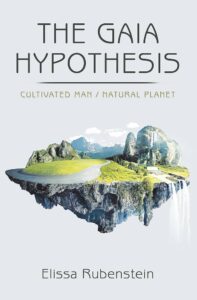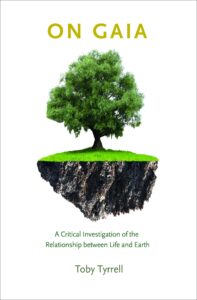Origin and Meaning
The Gaia Hypothesis was proposed by scientist James Lovelock in the 1970s.
गैया परिकल्पना 1970 के दशक में वैज्ञानिक जेम्स लवलॉक द्वारा प्रस्तुत की गई थी।
It sees Earth not just as a collection of living and non-living parts, but as a self-regulating, complex system that maintains the conditions needed for life.
यह पृथ्वी को केवल जीवित और निर्जीव तत्वों का समूह नहीं, बल्कि एक स्वयं को नियंत्रित करने वाली जटिल प्रणाली मानती है, जो जीवन के लिए अनुकूल परिस्थितियों को बनाए रखती है।
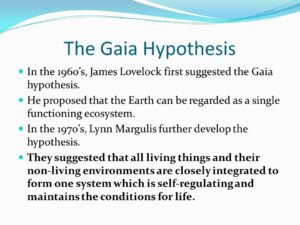
Core Idea
Earth behaves like a single living organism: its atmosphere, oceans, and biosphere work together to regulate temperature, chemical composition, and climate.
पृथ्वी एक एकल जीवित जीव की तरह व्यवहार करती है: इसका वायुमंडल, महासागर और जैवमंडल मिलकर तापमान, रासायनिक संरचना और जलवायु को संतुलित रखते हैं।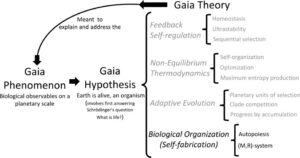
Example
Tiny ocean organisms (phytoplankton) release chemicals that help form clouds. These clouds reflect sunlight and help cool the Earth — an example of Earth self-regulating.
महासागर में पाए जाने वाले छोटे जीव (फाइटोप्लैंकटन) ऐसे रसायन छोड़ते हैं जो बादल बनाने में मदद करते हैं। ये बादल सूर्य की रोशनी को परावर्तित करते हैं और पृथ्वी को ठंडा रखते हैं — यह पृथ्वी के स्व-संयोजन का उदाहरण है।
Key Thinker
James Lovelock developed this idea, and biologist Lynn Margulis supported it by explaining how microbes contribute to Earth’s stability.
जेम्स लवलॉक ने इस विचार को विकसित किया, और जीवविज्ञानी लिन मार्गुलिस ने यह बताकर इसका समर्थन किया कि सूक्ष्म जीव पृथ्वी की स्थिरता में कैसे योगदान देते हैं।
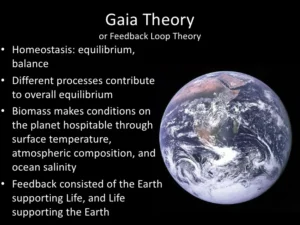
Key Book and Quote
Book: Gaia: A New Look at Life on Earth (1979)
पुस्तक: Gaia: A New Look at Life on Earth (1979)
“The Earth system behaves as if it were a single organism.” – James Lovelock
“पृथ्वी प्रणाली ऐसा व्यवहार करती है जैसे वह एक जीवित जीव हो।” – जेम्स लवलॉक
Significance in Political Thought & Ecologism
Supports ecocentrism over anthropocentrism: nature, not just humans, is central.
Strengthens environmental ethics: humans must respect Earth’s natural balance.
Inspired the green politics movement and ecological citizenship debates.
Raises the idea of Earth stewardship and collective responsibility.
यह प्रकृति-केंद्रित दृष्टिकोण (ecocentrism) को बढ़ावा देती है: केवल मनुष्य नहीं, प्रकृति भी केंद्र में है।
पर्यावरणीय नैतिकता को मजबूत करती है: मानव को पृथ्वी के प्राकृतिक संतुलन का सम्मान करना चाहिए।
हरित राजनीति और पारिस्थितिक नागरिकता की बहस को प्रेरित करती है।
पृथ्वी की संरक्षण की सामूहिक जिम्मेदारी की भावना जगाती है।
Criticism
Critics call it teleological: it seems to suggest Earth has purpose or intention.
Some scientists say it is more metaphor than mechanism.
Hard to prove empirically; functions better as a conceptual model.
आलोचकों का कहना है कि यह उद्देश्यवादी (teleological) है: ऐसा लगता है जैसे पृथ्वी का कोई इरादा या उद्देश्य है।
कुछ वैज्ञानिक इसे वैज्ञानिक तर्क से अधिक रूपक मानते हैं।
अनुभवजन्य (empirical) रूप से प्रमाणित करना कठिन; यह एक वैचारिक मॉडल के रूप में बेहतर काम करता है।




